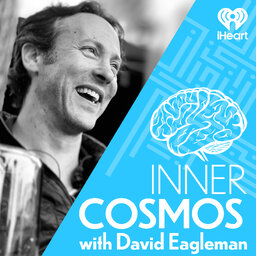Ep22 "What do we find beautiful?"
Why do briefly glimpsed people appear to be more attractive? Why did portrait photographers put Vaseline on their lenses, and what does that have to do with Instagram filters? Why are thirsty people more likely to perceive something as transparent? And what does any of that have to do with mating, optimal decision making, puberty, frogs, and movie stars? In this episode, Eagleman gets us to view the familiar as strange as we examine beauty, instincts, and what drives us.
 Inner Cosmos with David Eagleman
Inner Cosmos with David Eagleman


